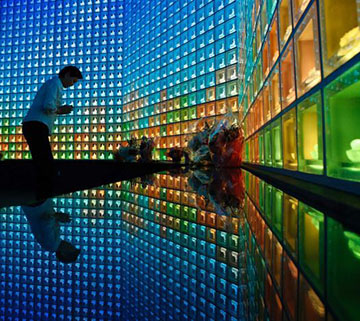High-tech Japanese funeral industry booms
AUSTRALIA – Japan has the oldest population in the world and in the next 50 years it is set to shrink by 40 million, leading to its end-of-life industry booming. Almost all Japanese people get cremated and have their ashes put into family crypts in conventional looking cemeteries.
However, with spaces costing up to $100,000, high-tech alternatives like skyscraper graveyards are becoming a necessity. They are fully automated and store thousands of urns. Relatives are given an identity card and robotic arms retrieve the loved one’s ashes from vaults deep underground. At one temple in Tokyo at Shinjuku, thousands of tiny Buddhas illuminated with LED lights represent the family crypts. A smartcard activates the crystal Buddha, which lights up the specified tiny vault that sits behind it.
Elderly people are increasingly taking charge of their own funerals, rather than leaving it to their families. Kazuko Okumura tried a coffin for size at a suburban shopping centre in Tokyo to see what the journey to the afterlife would feel like. “It felt warmer than expected, I imagined it would be much colder so I’ll be comfortable when I’m sent off,” Ms Okumura said.
End-of-life preparations are a booming business and in Japan the industry is worth $5 billion a year. Supermarket chains hold regular seminars that are a one-stop shop from types of funerals to insurance to wills. Kasuhiro Shishido from Aeon supermarkets said the event gave people a chance to think about death. “You can choose the kind of death you want and get rid of worry, and enjoy the rest of your life,” Mr Shishido said.
At the Aeon seminar, 76-year-old Ayako Senda had her funeral photo taken, saying she wanted to be remembered as a healthy, vibrant person. “It’s good to take charge and be ready for my own funeral,” Ms Senda said. “My parents didn’t and didn’t have what they wanted.
“Also I don’t want to burden my children with funeral arrangements.”
Photo: woman praying at Japanese skycraper graveyard, Reuters, Toru Hanai.
Originally published by ABC News (Australia Broadcasting Company), author Matthew Carney.


Leave a Comment
You must be logged in to post a comment.